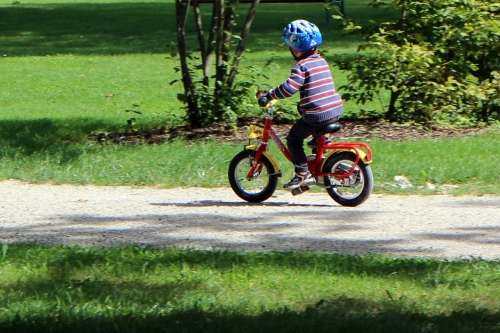Cycle training for children has benefits in adolescence

A large-scale UK study of cycling and related safety behaviours, by researchers from Children of the 90s, found children who did a National Cycle Proficiency Scheme course in primary school carried positive cycling behaviour into adulthood.
They were also more likely than children who didn't do a course to:
- cycle to school (at age 14 and 16)
- own a cycle helmet (at age 14 and 16)
- have worn a helmet on their last cycle ride (at age 14)
- have worn high-visibility clothing on their last cycle ride (at age 16)
Regardless of training, however, the researchers found:
- Teenage girls are far less likely to cycle than boys: Despite over 70 per cent of girls owning a bike at age 16, only 8 per cent had cycled in the previous week, and only one in 60 cycled to school. This compares to more than a third (37 per cent) of boys who had cycled in the past week, and one in seven boys who cycled to school.
- Helmet ownership does not equal use: Over half of the teenagers who owned a bike also owned a helmet, but of those who owned a helmet, only four in 10 had worn it on their last cycle.
- Very few teenagers wear high-visibility clothing: Teenagers were more likely to have worn reflective or fluorescent clothing at age 16 than age 14, but even at age 16 only about one in 15 wore it on their last cycle.
The findings of the research, conducted on 5,415 participants in Children of the 90s, indicate cycle training courses for children can have positive and lasting benefits that persist from childhood into adolescence. However, the low use of helmets and high-visibility clothing, and the low levels of cycling to school among girls, suggests more can be done to encourage safe cycling among teenagers.
Dr Alison Teyhan, who led the research said: "The aim of our report was to evaluate how effective cycle training for children is at promoting cycling and safe cycling behaviours. We found that cycle training has benefits that continue into adolescence – trained children are more likely to own and use a cycle helmet, to wear high-visibility clothing, and to cycle to school, when they are teenagers.
"While these are positive findings, we also found that many teenagers don't wear a cycle helmet or hi-vis clothing, and few teenage girls cycle even though the majority of them own a bike. There is therefore great potential to increase cycling, and safe cycling behaviours, in young people."
She added: "In countries with high rates of cycling like Denmark, Germany and the Netherlands, the use of protective equipment is low because the safety focus lies elsewhere. Wearing a helmet or hi-vis clothing does not automatically make cyclists safer, as there are lots of factors involved in cycling safety, including driver behaviour, the physical separation of bikes and vehicles, and traffic-calming measures in residential areas."
More information: The impact of cycle proficiency training on cycle-related behaviours and accidents in adolescence: Findings from ALSPAC, a UK longitudinal cohort. research-information.bristol.a … 1-283dad4bb373).html
















